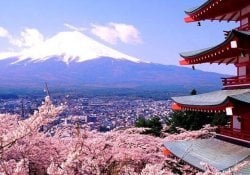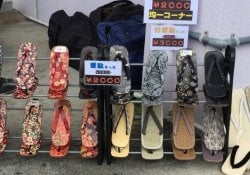You must have already seen the Strawhatz - Kimono (浴衣) in anime or anything related to Japanese culture. This garment is generally used in the summer because it is more comfortable and has a lighter fabric. The yukata can be worn by both men and women, changing few things in style.
The yukata is a casual style for the kimono that is worn by men, women and children alike. The fabric of the yukata is cotton or synthetic fabric. It is like an elegant robe, attached to the body with a sash called an obi (fabric belt). But how did this style come about? What is the difference between kimono and yukata? Let's see more details of this outfit.
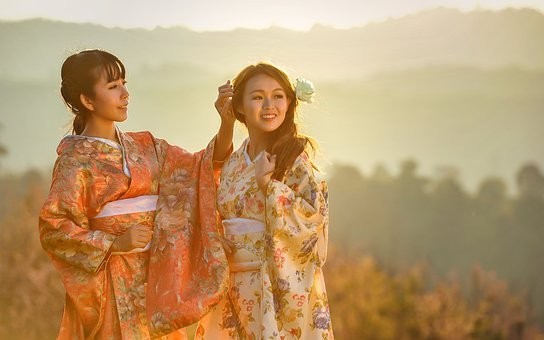
Índice de Conteúdo
How and when did the yukata come about?
The yukata is a more traditional attire, however on certain occasions, festivities it is common to use this outfit. Clothing originated from yukatabira (湯帷子), a garment made from hemp (Cannabis sativa plant) and commonly used by people belonging to the nobility to bathe in hot springs (onsen).
This already happened in the Heian period (794 - 1185), but it became popular in the Edo Era (1603 - 1868) with the growth of cotton use in Japan. The cotton in the fabric is believed to have been around 799 when it was taken to Japan by shipwrecked Chinese. Cotton cultivation only increased. becoming the largest producer of traditionally made kimonos.
Yukata literally means "swimwear" and at first that was supposed to be the goal. The yukata was used for a while only as bed linen to wear after showering or sleeping. But clothing ended up taking over festivals as well. The traditional yukata had its fabric dyed by indigo leaves (the plant that gives rise to the indigo blue color), similar to jeans, it varies between blue and a little white.
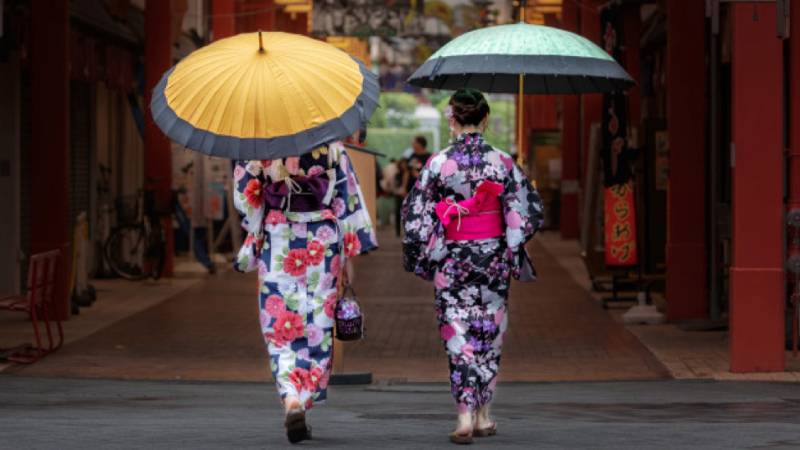
But nowadays there are a wide variety of models to use and it is possible to make different combinations using accessories and much more. There's not much of a pattern to be followed these days with this outfit. Men's yukatas are darker in color, while women's are more colorful and usually have flowery designs.
It is still common for people to wear yukata in japanese festivals and at fireworks festivals (Hanabi Taikai). Also in other traditional events that take place during the summer. In places that have hot springs, they walk freely with the yukata. Also, in traditional ryokan hotels and onsens.
What is the difference between yukata and kimono?
Kimono literally means "garment" and is usually used on more formal occasions such as weddings, funerals and among others. In the past, it was common to be used by men on a daily basis. However, it is now more geared towards certain formal events.
The kimonos, both male and female, are usually in more discreet prints, To wear the kimono it is necessary to follow some etiquette rules such as occasion, season of the year, gender, kinship or marital status of the person wearing it.
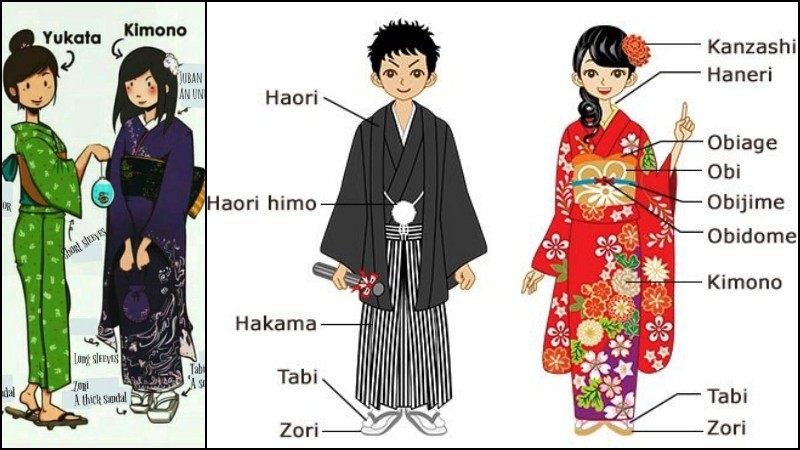
The modeling of the men's and women's kimono has a slight change in relation to the sleeves. The men's kimonos are sewn under the arm and in the women's the forearm is open. Fabrics can be cotton, silk and various synthetic fiber options.
The difference with yukata already starts with the nomenclature, yukata originated from the words yu (bath) and katabira (underwear). In addition to everything already mentioned about clothing, the traditional yukata, usually made from standard cotton fabric, is used for summer festivals and even as pajamas. The ways of being dressed are also different and the yukata is much lighter.
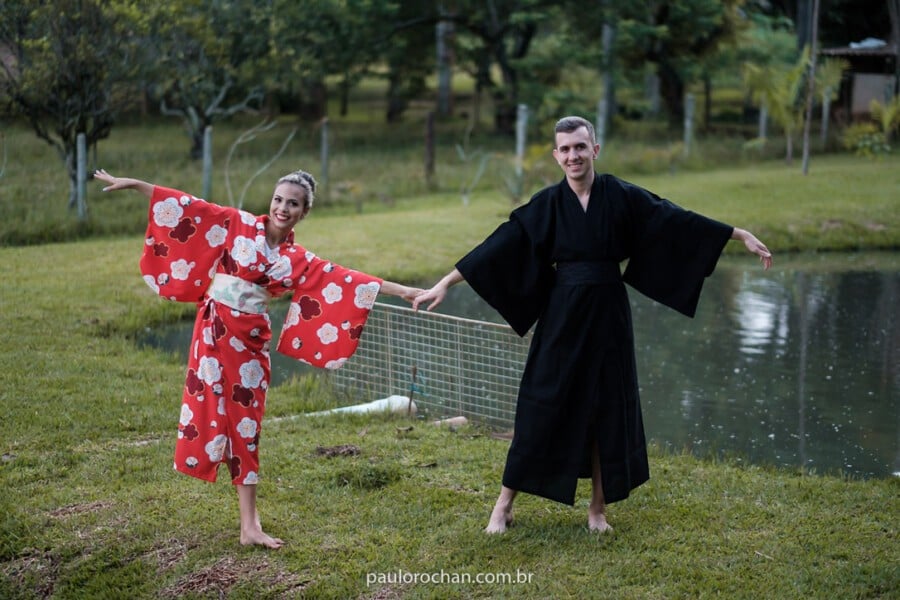
How to wear yukata?
The Japan House São Paulo website (www.japanhousesp.com.br) gave a step-by-step guide on how to use the yukata.
You will need:
• Yukata : casual summer kimono.
• Obi (帯): ornamental sash used to tie the kimono.
• 2 himos (紐): bands measuring, in general, 240 x 4.5 cm (can be adapted using bands of other widths or thick elastic, as long as they are comfortable and do not slip)
• Shitagi (下着): underwear used to protect the kimono from body sweat. This item is optional and can be adapted with a cotton t-shirt with a low neckline in the back to show the skin through the opening of the eri (衿), the collar.
• Geta (下駄): Japanese clogs. This item is also optional and can be fitted with flip-flops.
1. align the senui (背縫い), vertical seam in the center of the back, with the center of the body.
2. Join the ends of eri to ensure the seam is in the center of the body and adjust the height of the bar.
3. Check the height of the bar on the left side of the Strawhatz - Kimono, because, in the end, this part will be on top.
4. Position the right side so that it is not visible after the left side overlaps. Overlap the left side. The ideal length should hide the ankles or let it show subtly when moving.
5. tie the koshihimo (腰紐), hip binding. Wrap the body twice and tighten enough to secure the fabric position comfortably.
6. put your hand through miyatsukuchi (身八つ口), opening below the sleeve existing only in women's kimonos, and adjust the ohashori (おはしょり), fold of excess fabric also present only in women's kimonos. Arrange the fabric on the back and front.
7. fix the eri in the front next to the bones below the neck in a “Y” shape and leave an opening in the back of approximately a fist.
8. Machete munahimo (胸紐), the chest binding. Make two turns, take a deep breath and squeeze to secure the tissue position. That way, you ensure that you can breathe comfortably while wearing the kimono.
9. Flatten the fabric on the back and front of the munahimo It's from ohashori, also on the front and back, as they will be apparent after tying the obi.
10. If possible, line up the seams on the front, sides, and back of the kimono. This part takes practice, but don't be discouraged if you can't. Wear it however you can and improve over time!
How to tie the obi
1. Fold the sash in half and leave an excess to secure the tie, passing a little from shoulder height diagonally.
2. Open the band in an arrow, lining up the top of the band at a height near the middle of the bust or just below it, depending on the body. Make two turns, squeezing the band and inhaling in the same way as with the munahimo.
3. diagonally fold the obi to facilitate the execution of the node.
4. Make the bow at the front of the body. Use your shoulder measurement to start the tuck in. tare (たれ), the longest part left after the knot, and fold as many times as possible, lining up the edges.
5. Position approximately the center of the tare above the node. Fold in half crosswise and fold back by folding the two halves, the top and bottom, in half again, forming an accordion.
6. Pass the leftover strip folded in half left at the beginning of the process, and pass under the knot made earlier. Give it one more turn to secure, roll up what's left, hiding it inside the obi, and center the sides of the loop.
7. carefully turn the obi, from left to right, so as not to clutter the eri and place the loop in the center of the back.
8. put the geta - Japanese clogs - and other accessories.



